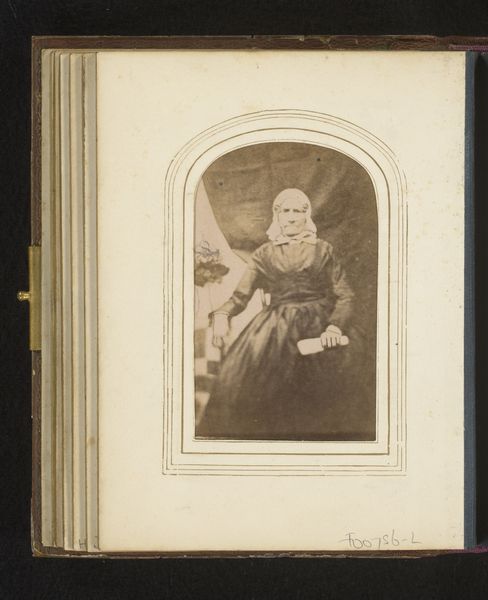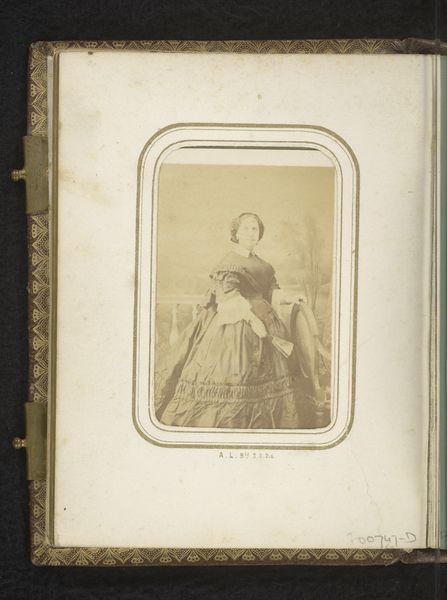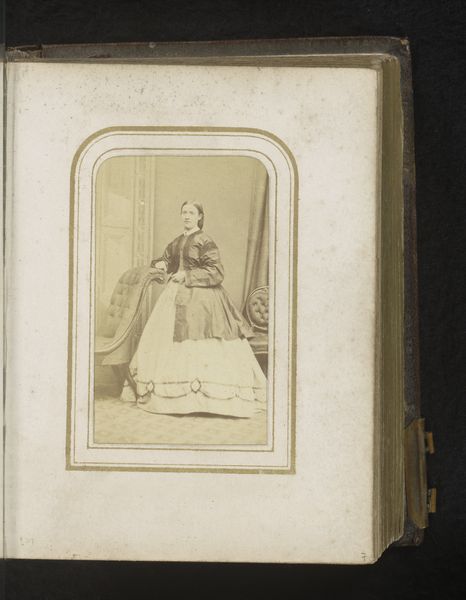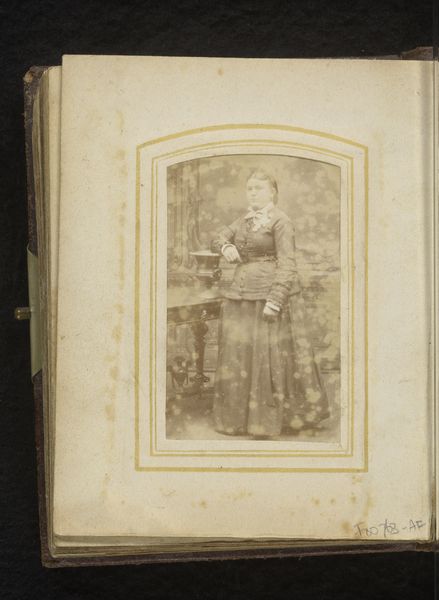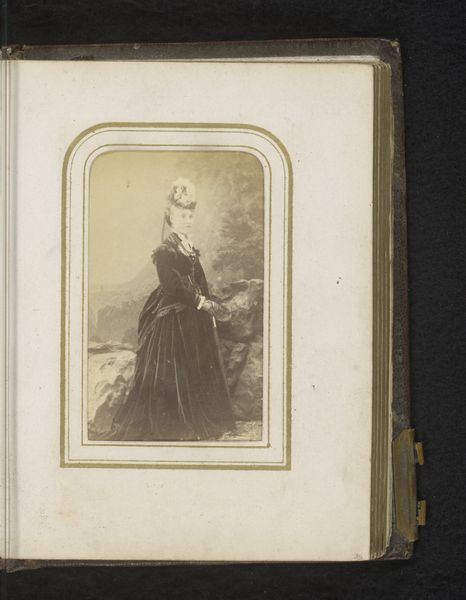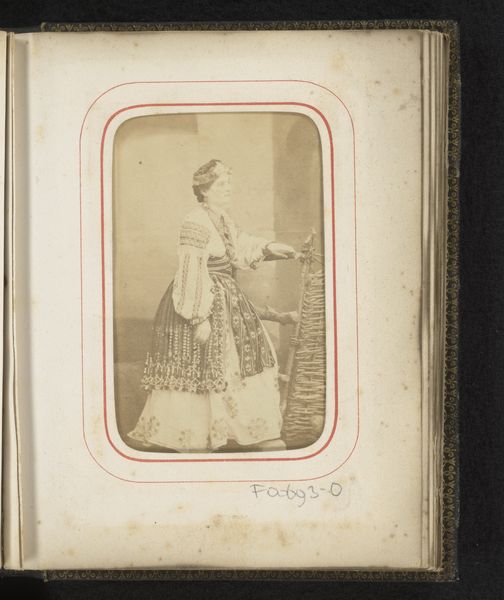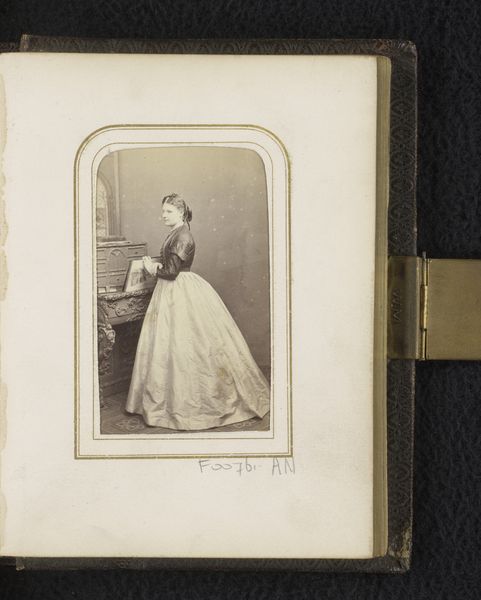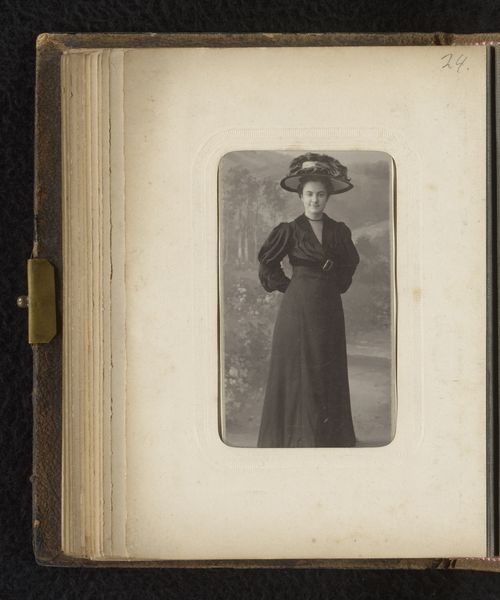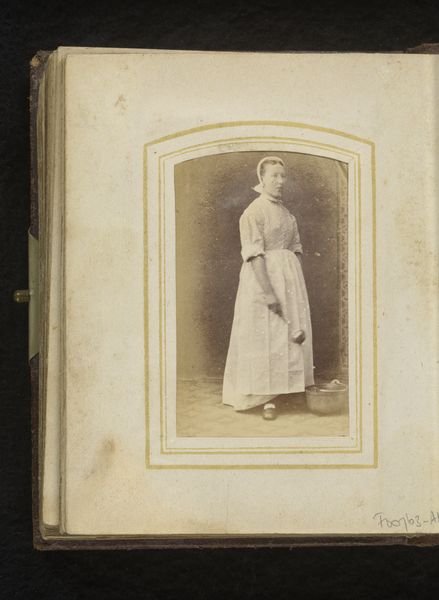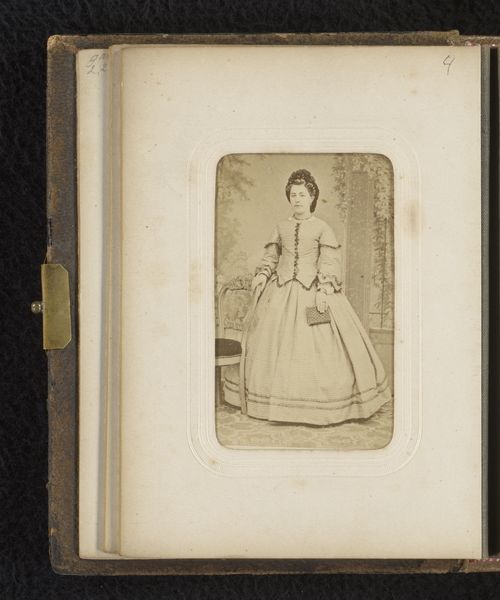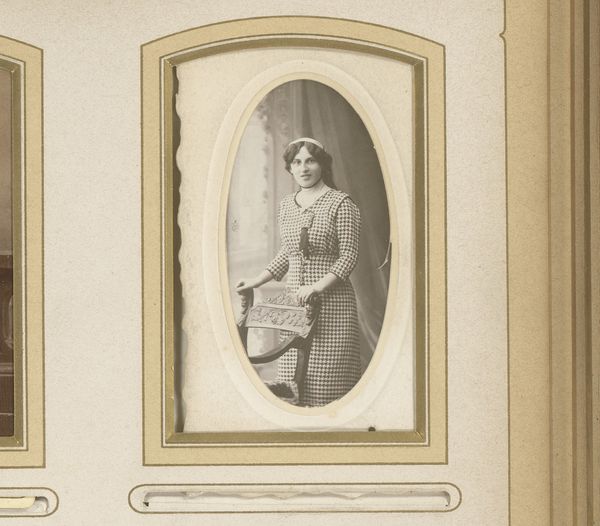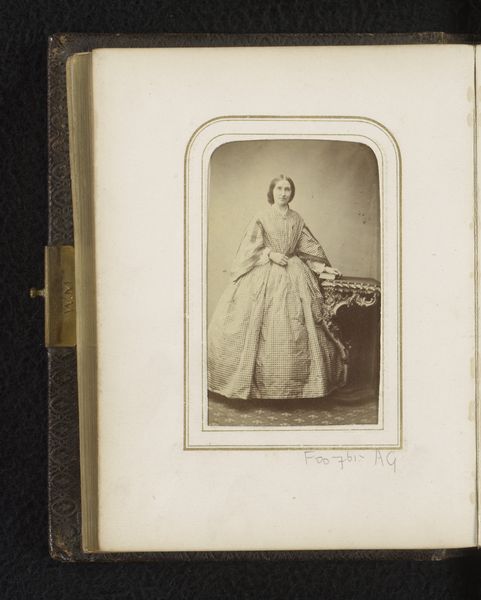
photography, albumen-print
#
portrait
#
photography
#
albumen-print
Dimensions: height 101 mm, width 67 mm
Copyright: Rijks Museum: Open Domain
Curator: This photograph captures Carmen Paz between 1855 and 1865, and it's thought to be made by R. Castro. It's an albumen print, offering a remarkably detailed glimpse into that era. The image appears to come from a photo album of the period, given its framing and mounting style. Editor: It has such a somber quality, almost like a scene from a play. The controlled tones, and the somewhat stiff pose--it evokes a sense of formality, even sadness. Is that backdrop painted, or constructed, I wonder? Curator: It is likely a studio backdrop, a common practice at the time, to situate the sitter within a particular narrative. And, considering that the woman is wearing a nun's habit, her social role becomes immediately clear, inviting questions of devotion, faith, and perhaps societal expectations imposed on women. Her attire acts as a powerful signifier. What might she have sacrificed to wear that garb? What community sustained her? Editor: The albumen process would have demanded immense technical skill. I wonder about the preparation of the glass plate negative and the manipulation of light to achieve such soft gradations. And consider the labor involved, not just the photographer's but also the artisans crafting the frame and album – a collective production defining the aesthetic experience. It would not be a democratic craft. Only affluent groups could benefit. Curator: Precisely. And even Carmen Paz's access to this form of representation would be linked to her class and position. To pose for a portrait would have been considered luxurious. As we are trying to understand the subject of the piece we must acknowledge our inherent biases and access to viewing that artwork from our current place and time. The context in which this piece existed greatly shapes our perspective of its interpretation. Editor: That muted palette, almost monochrome. A world leached of colour seems fitting given the constraints – artistic, technical, social – that coalesce here. Even the presentation in the album emphasizes confinement and enclosure, like preserving a specimen or a relic. Curator: In this era photography began emerging as an expressive medium that also reflects identity and culture. In many respects, viewing these early photographic artifacts is like looking back on ourselves with recognition and an emotional tie. We can trace a continuity of experience with these images as documentation of their time, allowing their story to unfold over generations. Editor: Indeed. Pondering these very objects compels us to interrogate not only history's visual fabric but our role in deciphering that meaning in contemporary contexts. We each draw our interpretation through our own biases.
Comments
No comments
Be the first to comment and join the conversation on the ultimate creative platform.
